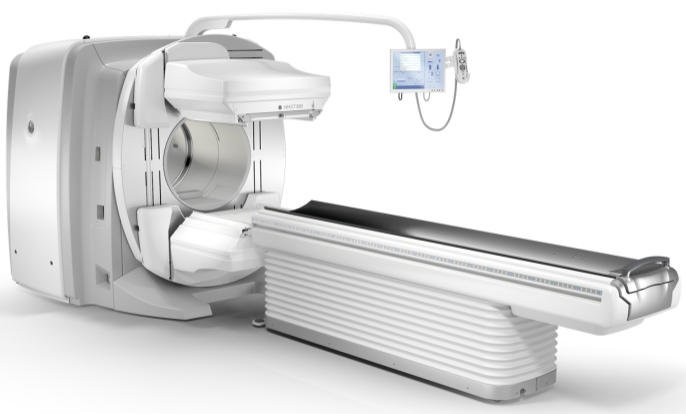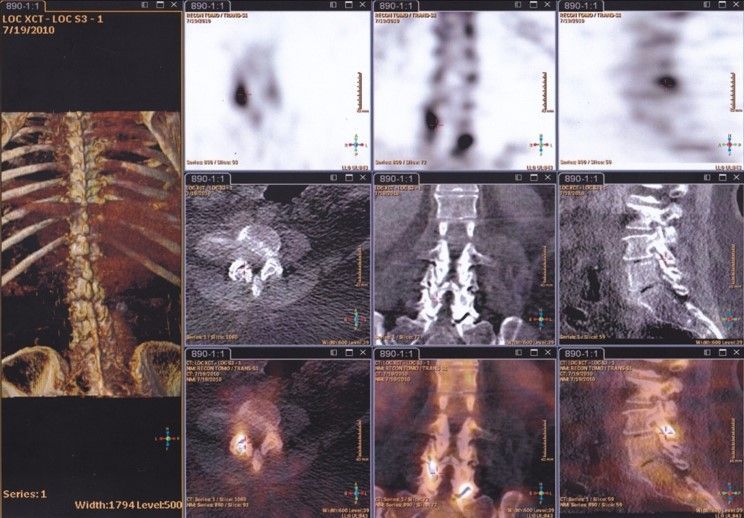Bone Scan (SPECT/CT)

What is a Bone Scan (SPECT/CT)?
A Bone Scan (SPECT/CT) is used to look at the physiology of the bones. It is a sensitive imaging modality that can identify areas of inflammation or injuries to bones and joints, bone diseases, infections and skeletal lesions. It combines two technologies:
- Single Photon Emission Computed Tomography (SPECT) – This detects radioactive tracers injected into the body, highlighting areas of high bone activity or abnormalities.
- Computed Tomography (CT) – This provides detailed 3D images of the bones, offering better anatomical detail.
By merging these technologies, SPECT/CT provides a highly accurate assessment of bone health, identifying issues such as fractures, infections, tumours, or joint problems.
Who is Suitable for a Bone Scan (SPECT/CT)?
A Bone Scan (SPECT/CT) is commonly recommended for individuals with:
- Unexplained Bone Pain – To detect hidden fractures or stress injuries.
- Suspected Bone Infections (Osteomyelitis) – To confirm the presence and location of an infection.
- Cancer Diagnosis & Staging – To check for bone metastases in breast, prostate, or lung cancers.
- Arthritis & Joint Disorders – To assess inflammation or degeneration in the joints.
- Post-Surgical Evaluation – To check for complications like implant loosening or infections after joint replacement.
Benefits of a Bone Scan (SPECT/CT)?
A Bone Scan (SPECT/CT) offers several advantages over traditional imaging techniques:
- Early Detection – It identifies bone abnormalities earlier than X-rays or MRI.
- High Sensitivity – It detects even small changes in bone metabolism, making it useful for diagnosing conditions in their early stages.
- Detailed 3D Imaging – The CT component provides precise anatomical details, improving diagnostic accuracy.
- Differentiation of Conditions – Helps distinguish between conditions with similar symptoms, such as arthritis, infection, or cancer.
- Minimally Invasive – Only requires a small amount of radioactive tracer, with minimal risk to the patient.
Conditions Diagnosed by a bone scan (spect/ct)
A Bone Scan (SPECT/CT) is useful for diagnosing various bone-related conditions, including:
- Fractures & Stress Fractures – Especially in athletes or elderly individuals.
- Bone Infections (Osteomyelitis) – Helps detect infection early.
- Arthritis – Identifies inflammation in joints, including rheumatoid arthritis and osteoarthritis.
- Bone Tumors & Metastases – Used to locate cancer that has spread to the bones.
- Avascular Necrosis – Assesses bone tissue death due to poor blood supply.
- Paget’s Disease of Bone – Detects abnormal bone growth and remodelling.
- Joint Prosthesis Issues – Evaluates post-surgical complications like implant loosening or infection.

What Further Information Can a Bone Scan (SPECT/CT) Show?
A Bone Scan (SPECT/CT) provides detailed information beyond what standard X-rays, MRIs, or CT scans can detect. This includes:
- Metabolic Activity of Bones – It identifies areas with increased or decreased bone metabolism, indicating fractures, infections, or tumours.
- Differentiation Between Conditions – Helps distinguish between bone infections, arthritis, and cancer, which can sometimes appear similar in standard imaging.
- Bone Remodeling & Healing – Monitors how bones are healing after surgery, fractures, or joint replacements.
- Bone Viability – Detects bone death (avascular necrosis) before structural damage occurs.
- Inflammation & Soft Tissue Involvement – Can assess if nearby soft tissues are also affected in conditions like osteomyelitis.
- Staging of Bone Cancer – Determines how far the cancer has spread and whether treatment is working.
Preparation for a Bone Scan (SPECT/CT)
What to Bring?
- Referral from your doctor – Required for the procedure.
- Previous imaging reports – If available, for comparison.
- List of medications – Some drugs may interfere with imaging.
- Any relevant medical history – Such as previous bone injuries or surgeries.
What to Wear?
- Loose, comfortable clothing
- Minimal jewellery or metal accessories
- Avoid belts, underwire bras, or clothing with zippers
Can I take my normal medication?
Yes. Take all of your normal medications.
Can I eat and drink on the day of my test?
Yes, you do not need to fast before this test. However, drinking plenty of fluid will help the bone tracer clear from your system more quickly.
What if I am pregnant?
Please inform the doctor or the technologist if there is a chance you are pregnant or breastfeeding.
How Long Does It Take?
- The full process takes 3–5 hours as it involves two stages:
- Injection of the radioactive tracer
- Imaging after 2–3 hours, once the tracer has spread through the bones
- The scan itself takes about 20–45 minutes.
Bone Scan (SPECT/CT) Procedure
There are three parts to a bone scan:
- Part 1 - For this part of the test, a small bone tracer is injected into your vein, and images of your affected body part may be taken. This takes approximately 10 minutes.
- Part 2 - The bone tracer takes 2-4 hrs to completely go to your bones. Therefore, part 2 involves waiting. You can leave the department but must return at the time the technologist has given you.
- Part 3 - Involves scanning your bones, which takes approximately 20 to 45 minutes.
What to Expect After a Bone Scan (SPECT/CT)?
Post-Procedure Instructions
- Resume Normal Activities – You can return to daily activities immediately.
- Drink Plenty of Fluids – Helps flush the radioactive tracer from your body.
- No Radiation Precautions Needed – The tracer naturally leaves your system within 24 hours.
Is it painful and are there any side effects?
No. The injection does not cause side effects or reactions. It does not contain iodine and is, therefore, safe for people allergic to radiological contrast injections. Although you must remain still during the scan, the procedure is painless.
Can I drive home after the scan?
Yes.
When to Get Results?
- The physician will convey urgent results to your referring doctor; otherwise, your result will be available the following day between 2:00pm and 5:00 pm.
- Your doctor will review the findings, discuss the next steps, and whether further tests or treatment are needed.
Bone Scan (SPECT/CT) Prognosis
The prognosis varies depending on the condition diagnosed, but early detection and accurate assessment through SPECT/CT lead to better treatment outcomes.
Bone Scan (SPECT/CT) Risks
A Bone Scan (SPECT/CT) is generally safe and well-tolerated, but there are some minimal risks:
- Radiation Exposure – The scan uses a small amount of radioactive tracer, but the exposure is lower than a standard CT scan and poses no significant long-term risk.
- Allergic Reactions – Very rare, but some individuals may have mild allergic reactions to the tracer.
- Injection Site Reactions – Some people may experience minor bruising or discomfort at the injection site.
- Not Recommended for Pregnant Women – Radiation exposure, though minimal, is generally avoided during pregnancy unless essential.
- Breastfeeding Considerations – Mothers may be advised to pause breastfeeding for 24 hours to allow the tracer to clear from their system.

What if a Bone Scan (SPECT/CT) is Delayed?
If a doctor has recommended a Bone Scan (SPECT/CT), it is advisable to complete it as soon as possible to ensure an accurate diagnosis and timely treatment.
Bone Scan (SPECT/CT) Costs
Bulk billed. No out-of-pocket cost.




